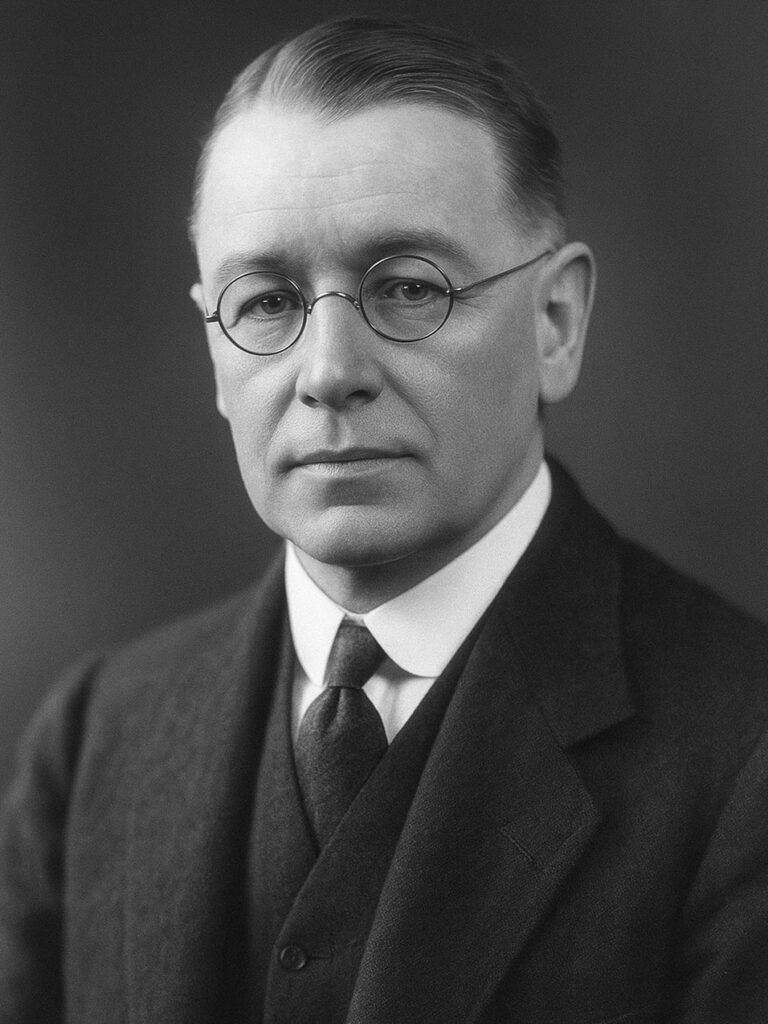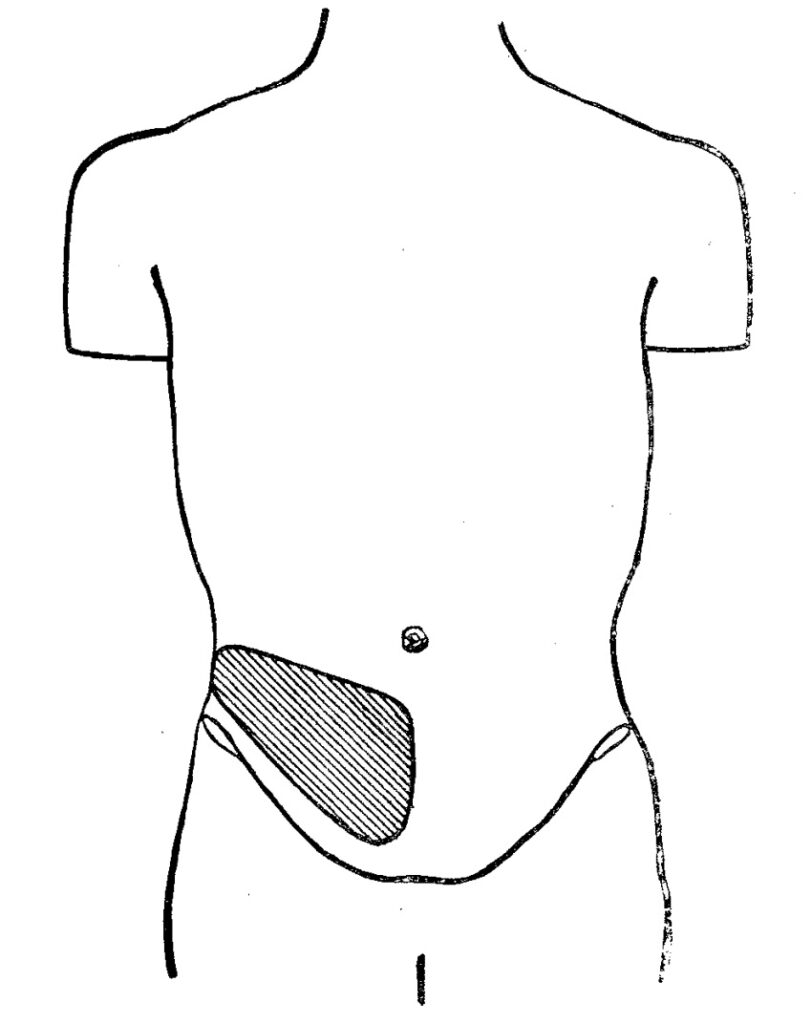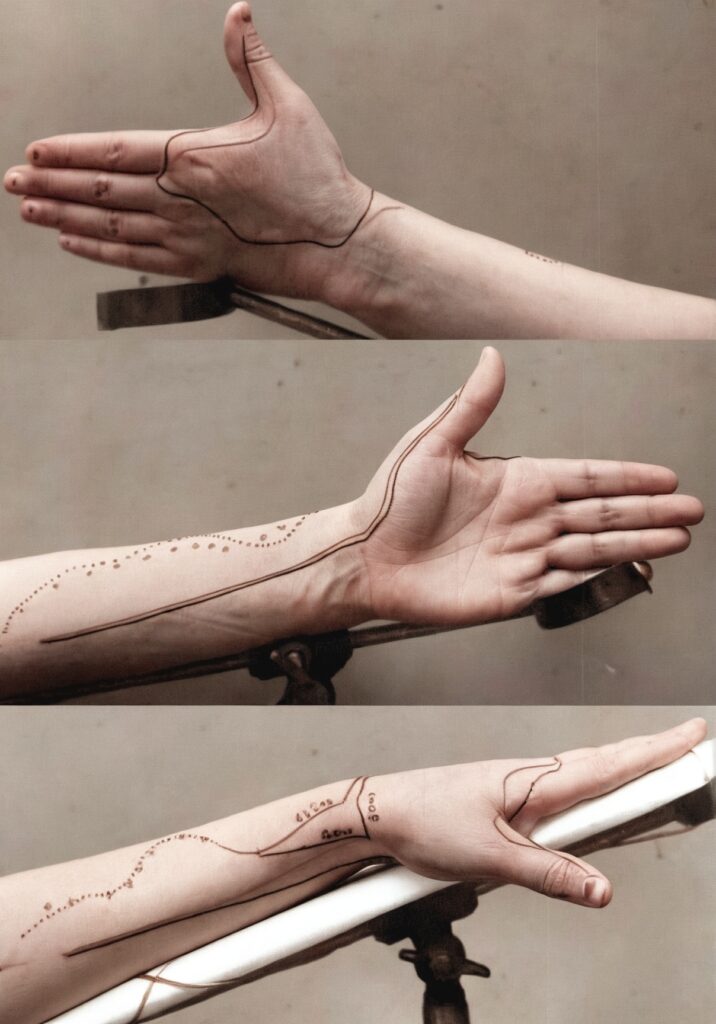James Sherren

James Sherren (1872-1945) was an English General surgeon.
James Sherren was a pioneering British surgeon, anatomist, and neurologist whose career combined early seafaring adventures with surgical distinction. Born in Weymouth on 31 October 1872, the son of printer John A. Sherren and Anne Eliza Wilkinson, he left school early to go to sea, earning his master mariner’s certificate before entering medicine at the London Hospital Medical College in 1894. He qualified MRCS, LRCP in 1899 and became FRCS in 1900.
Sherren rapidly rose through the surgical ranks, becoming assistant surgeon at the London Hospital in 1902 and full surgeon by 1913. He was a gifted clinical teacher, particularly influential in abdominal surgery and peripheral nerve repair. In collaboration with Sir Henry Head (1861–1940), he co-conducted the landmark sensory regeneration experiments following section of Head’s own radial nerve, helping to define the concepts of protopathic and epicritic sensation. He published Injuries of the nerves and their treatment (1908), which became a foundational text.
During World War I, Sherren served with distinction as a Consulting Surgeon and Colonel in the Army Medical Service. He worked at several military hospitals and was appointed CBE for his contributions. Postwar, he served the Royal College of Surgeons as Erasmus Wilson Lecturer (1906), Hunterian Professor (1920), Bradshaw Lecturer (1925), Vice-President (1925), and Council Member (1917–1926). He was also examiner for the FRCS and for London University.
In a dramatic decision in 1926, Sherren retired at the peak of his career to return to the sea as a ship’s surgeon, working to improve medical conditions for merchant seamen. He retired to Broadstone, Dorset, and died there on 29 October 1945, aged 73.
Biography
- 1872 – Born 31 October in Weymouth, Dorset
- 1880s – Went to sea, at age 13 as an apprentice in a four-masted ship. He was trained in both sail and steam. Obtained his Masters Mariner’s certificate at the age of 21. Became interested in medicine when he served as an apprentice at sea and assisted the ship’s doctor as an anaesthetist
- 1894 – Entered London Hospital Medical College
- 1899 – Qualified MRCS, LRCP
- 1900 – Earned FRCS (England)
- 1901 – Appointed Surgical Registrar, London Hospital
- 1902 – Appointed Assistant Surgeon, London Hospital
- 1906 – Delivered Erasmus Wilson Lecture, Royal College of Surgeons
- 1908 – Published Injuries of the nerves and their treatment
- 1913 – Appointed full Surgeon, London Hospital
- 1914–1918 – Served in WWI as Consulting Surgeon and Colonel, AMS
- 1917 – Elected Council Member, Royal College of Surgeons
- 1920 – Delivered Hunterian Professorship Lecture
- 1921 – Published Lectures on the Surgery of the Stomach and Duodenum
- 1925 – Delivered Bradshaw Lecture; Vice-President of RCS
- 1926 – Retired abruptly and returned to sea as ship’s surgeon
- 1939–1945 – Worked at Cornelia and East Dorset Hospital during WWII
- 1945 – Died 29 October in Broadstone, Dorset
While Britain breeds such men, her position in surgery remains assured
A.M.A. Moore, 1973
Medical Eponyms
Sherren triangle (1903)
Area of skin hyperaesthesia bounded by lines joining anterior superior iliac spine, the pubic symphysis and umbilicus. One of myriad signs associated with acute appendicitis.
1903 – Sherren examined 51 consecutive cases of appendicitis to evaluate deep versus cutaneous signs of the disease process
Cutaneous hyperalgesia is tested by gently pinching or stroking the skin, beginning if possible in an area which is not tender and working towards the suspected tender area and so marking out its boundaries.
In appendicitis cutaneous hyperalgesia varies from a complete band extending on the right side from the middle line below the umbilicus in front to the lumbar spines behind, down to a small circular spot a little above the middle point between the umbilicus and the anterior superior spine.
As an aid in determining operation the disappearance of hyperalgesia is of the utmost importance. If well-marked superficial tenderness disappears without coincident amelioration of the general condition of the patient it is a sign of perforation or gangrene of the appendix.
Sherren 1903

1905 – Sherren further defines the ‘appendix triangle’ to assist in decision for operative intervention in regards to appendix abscess. Sherren describes the area of superficial hyperalgesia as
…a triangular area on the right side of the abdomen, which I described as ‘the appendix triangle’, bounded below by Poupart’s ligament, above by a line drawn out from the umbilicus, and to the inner side by a vertical line just to the right of the mid-line. Its apex is at the anterior superior spine
Sherren 1905
Ochsner-Sherren procedure (1902)
Delayed treatment for appendicitis. [Bailey H 1930]
1902 – Albert John Ochsner (1858-1925), professor of clinical surgery at the University of Illinois College of Medicine. He published his Handbook of Appendicitis in which he advocated the ‘delayed‘ treatment of late peritonitis, especially that associated with acute appendicitis. He proposed non-operative treatment for presentations where operative conditions were not favourable
1905 – Sherren championed the cause of the delayed treatment of appendicitis in England, and trained his assistants in its principles.
If we are able to see a case within the first 24 or 36 hours, when the disease is probably limited to the appendix, operation should be performed and the appendix removed…after the most favourable time has passed, I am strongly of the opinion that, if possible, we should wait until the attack is over.
Other Medical Contributions
Sherren and Sir Henry Head (1861 – 1940) had tried to determine the sensibility remaining after complete division of all cutaneous nerves without injury to the muscular branches. However accidents of this nature were exceedingly rare, and although ‘real patients’ were helpful it was deemed that “Introspection could be made fruitful by the personal experiences of a trained observer only“. The decision was therefore made to perform surgical transection on the left hand radial nerve of Head, with evaluation of results by William Halse Rivers (1864 – 1922)…
At the time of the experiment, H. was nearly 42 years of age and in perfect health. Since boyhood he had suffered from no illnesses, excepting as the consequence of wounds in the post-mortem room….For two years before these experiments began he had given up smoking entirely. No alcohol was ever taken on the days during which he was under examination.
On April 25, 1903…an incision 6.5 in. (16.5 cm.) long was made in the outer bicipital fossa extending along the axial line of the left upper extremity…the radial nerve was divided at the point where it arises from the musculospiral (N. radialis). A small portion was excised, and the ends united with two fine silk sutures. The external cutaneous nerve (N. cutaneus antibrachii lateralis) was also divided…and sutured with fine silk
Rivers 1908
Following the surgical section and repair of Head’s superficial radial nerve, Sherren and Rivers commenced rigorous and meticulous observation through sensory testing and evaluating psycho-social responses during the period of recovery and for the following 5 years. This contributed greatly to the understanding of the sensory examination following nerve injury

Major Publications
- Sherren J. On the occurrence and significance of cutaneous hyperalgesia in appendicitis. Lancet 1903; 162(4177): 816-821
- Sherren J. The causation and treatment of Appendicitis. Practitioner, 1905; 74: 833-844
- Sherren J. Injuries of Nerves and Their Treatment, 1908
- Hutchison R, Sherren J. An Index of treatment, Bristol, 1908
- Head, Sir Henry, Rivers WHR, Sherren J. Studies in Neurology, 1920
- Sherren J. Lectures on the Surgery of the Stomach and Duodenum, 1921
- Sherren J. An Address on appendicitis. Br Med J. 1925; 1(3355): 727–730
References
Biography
- James Sherren (1872–1945). British Journal of Surgery, 1946; 33(131): 286–288
- James Sherren (1872–1945). Br Med J. 1945 Nov 10;2(4427):670–671.
- James Sherren (1872-1945). Lancet; 246(6376): 615-616
- Moore AM, Moore MA. James Sherren – surgeon and sailor. Br J Surg, 1973;60: 841–846.
- Sherren JC. Sherren’s of the World pp 1-25
- Biography: Sherren, James (1872-1945) Plarr’s Lives of the Fellows Online. Royal College of Surgeons of England.
Eponymous terms
- Head H. On disturbances of sensation with especial reference to the pain of visceral disease. Brain. 1893; 16(1-2): 1-133
- Ochsner AJ. A Handbook of Appendicitis. Engelhard & Co., Chicago, 1902, page 110.
- Bailey H. The Ochsner-Sherren (Delayed) Treatment Of Acute Appendicitis: Indications And Technique. Br Med J 1930;1:140 [PDF]
- Hamilton Bailey. Ochsner-Sherren treatment of appendicitis. Notable names in medicine and surgery 1959: 165-167
- Eponymythology: Appendicitis eponymous signs. LITFL
Eponym
the person behind the name
